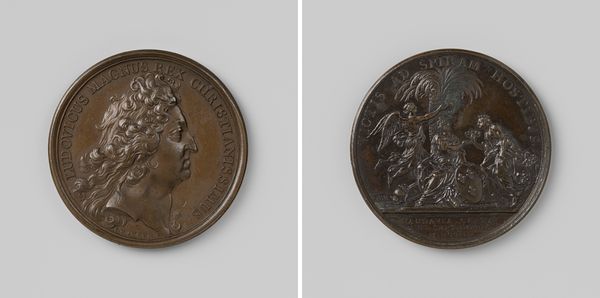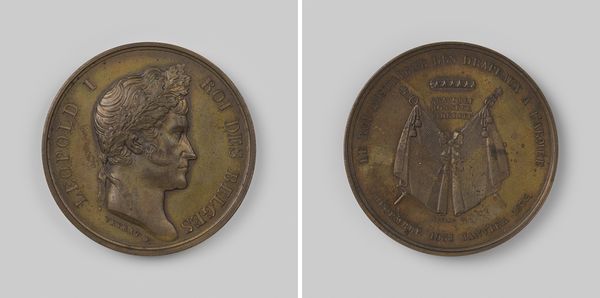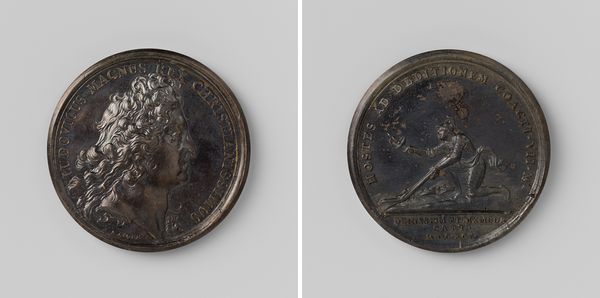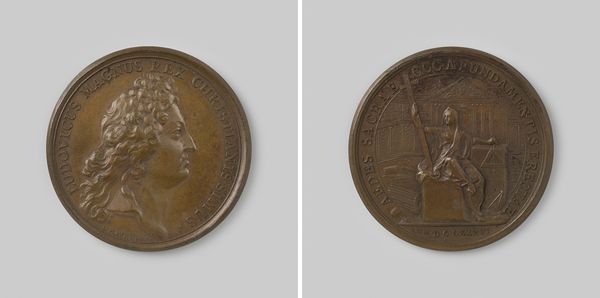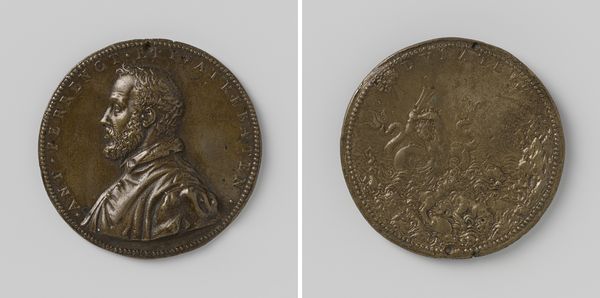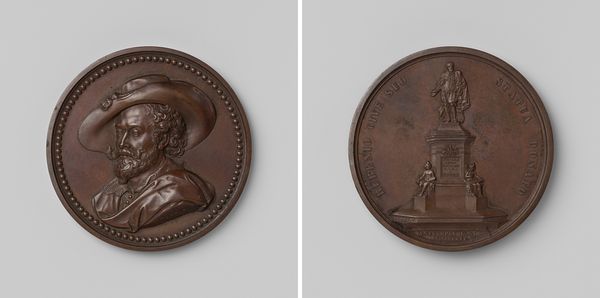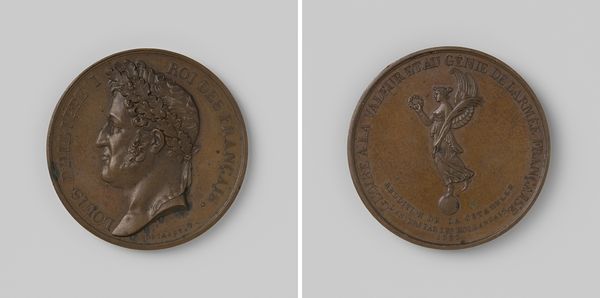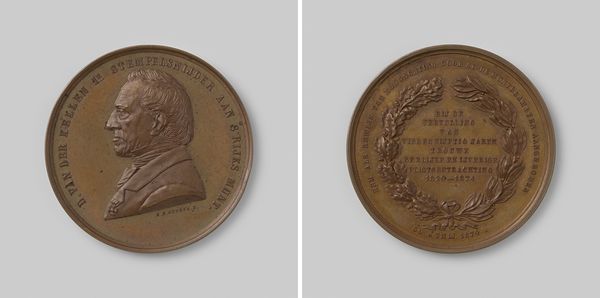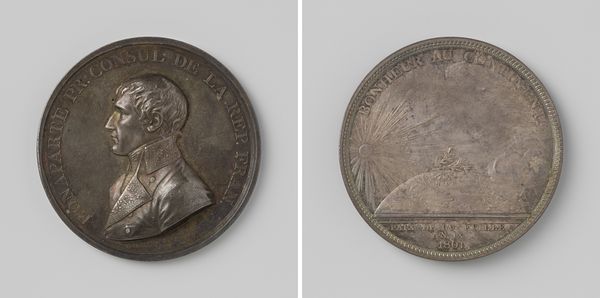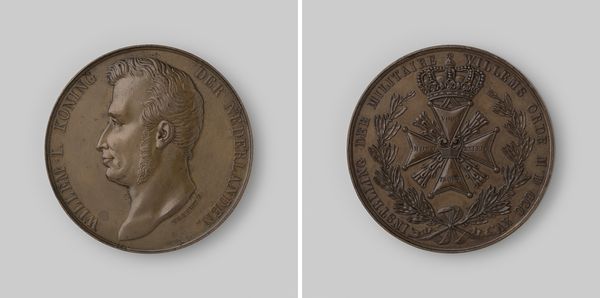
relief, bronze, sculpture
#
portrait
#
baroque
#
sculpture
#
relief
#
bronze
#
sculpture
#
history-painting
Dimensions: diameter 4.1 cm, weight 31.13 gr
Copyright: Rijks Museum: Open Domain
Editor: This bronze relief from around 1700 by Jean Mauger is titled "The Peace of Rijswijk, in honor of Louis XIV". What strikes me most is the duality – one side boasts a regal portrait, the other depicts submission. How do you interpret this contrast? Curator: Indeed, the symbolic weight here is substantial. Consider the visual vocabulary: Louis XIV, "the Sun King," eternally youthful in profile, framed by Latin proclaiming his greatness. But turn the coin, and you see a defeated figure kneeling before a personification of peace. Editor: So, it's about more than just recording a historical event. Curator: Precisely. This wasn’t mere documentation, but propaganda. The symbols tell us that it seeks to manipulate cultural memory. Note the olive branch being offered. What does that communicate? Editor: It’s presenting Louis XIV as a benevolent peacemaker, despite the realities of the war. Is there any record of whether these kinds of objects had popular impact, or not? Curator: Impact is hard to quantify centuries later, yet, it’s vital to remember that images like this shaped public opinion. Consider how the image normalises the dynamic of the powerful King showing mercy on subjugated groups: notice how later generations understood power structures based on these symbols. What this bronze tells us today depends on what we ask it to reveal about how continuity gets manufactured. Editor: That's fascinating – a potent mix of art and political messaging. Curator: Exactly! These symbols become building blocks in our collective consciousness. Looking closely shows that art reveals, conceals, and above all, remembers. Editor: This has really broadened my understanding, I appreciate that. Curator: And I appreciate your insightful questions. This dialogue reminds us that understanding visual culture is critical to grasping the past and shaping our future.
Comments
No comments
Be the first to comment and join the conversation on the ultimate creative platform.
